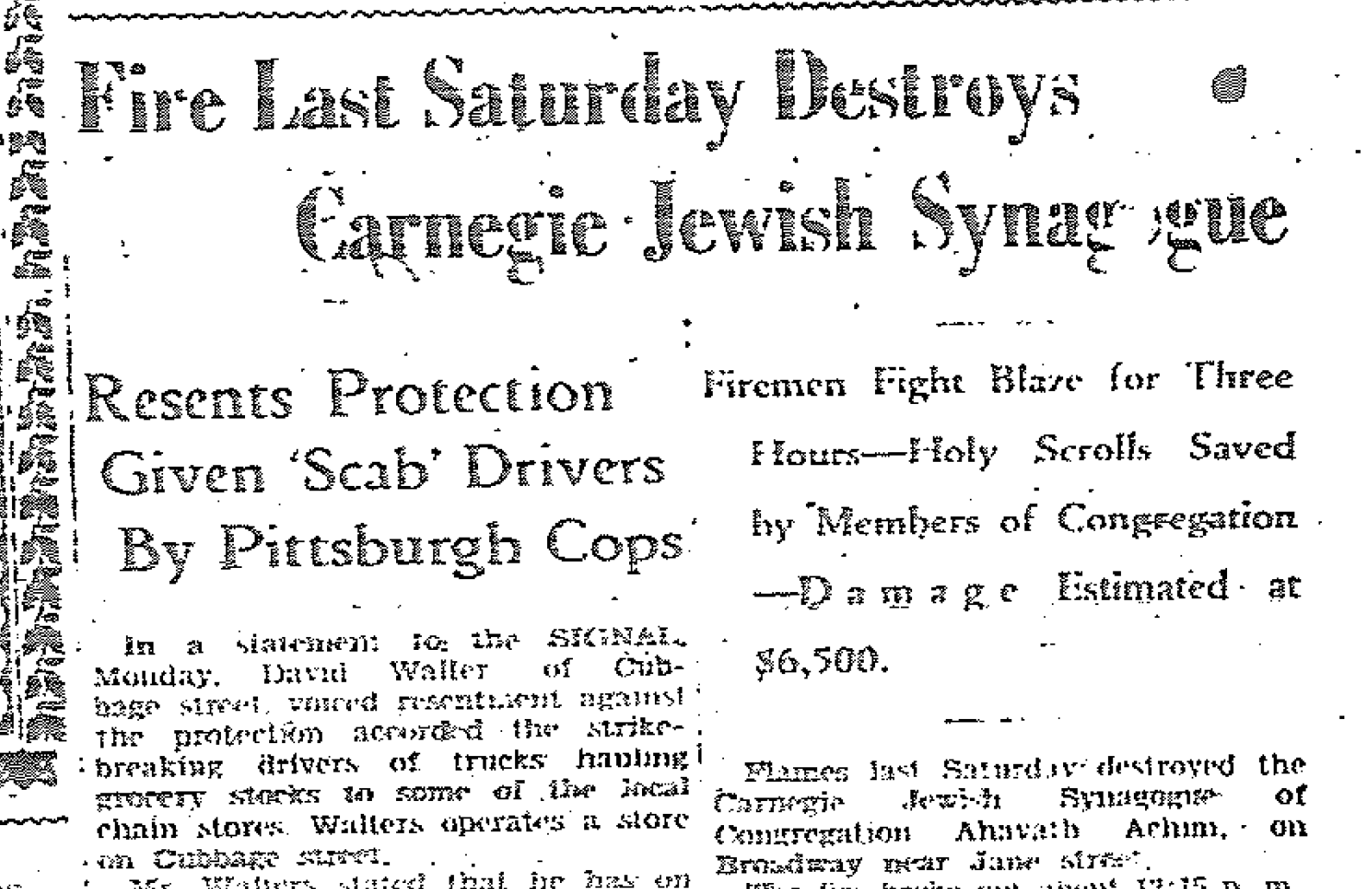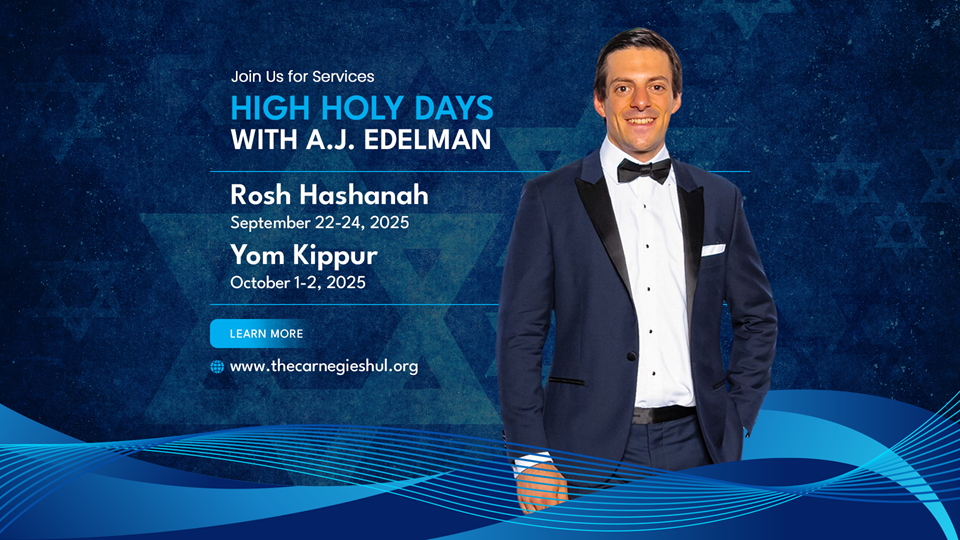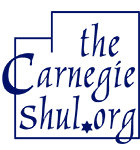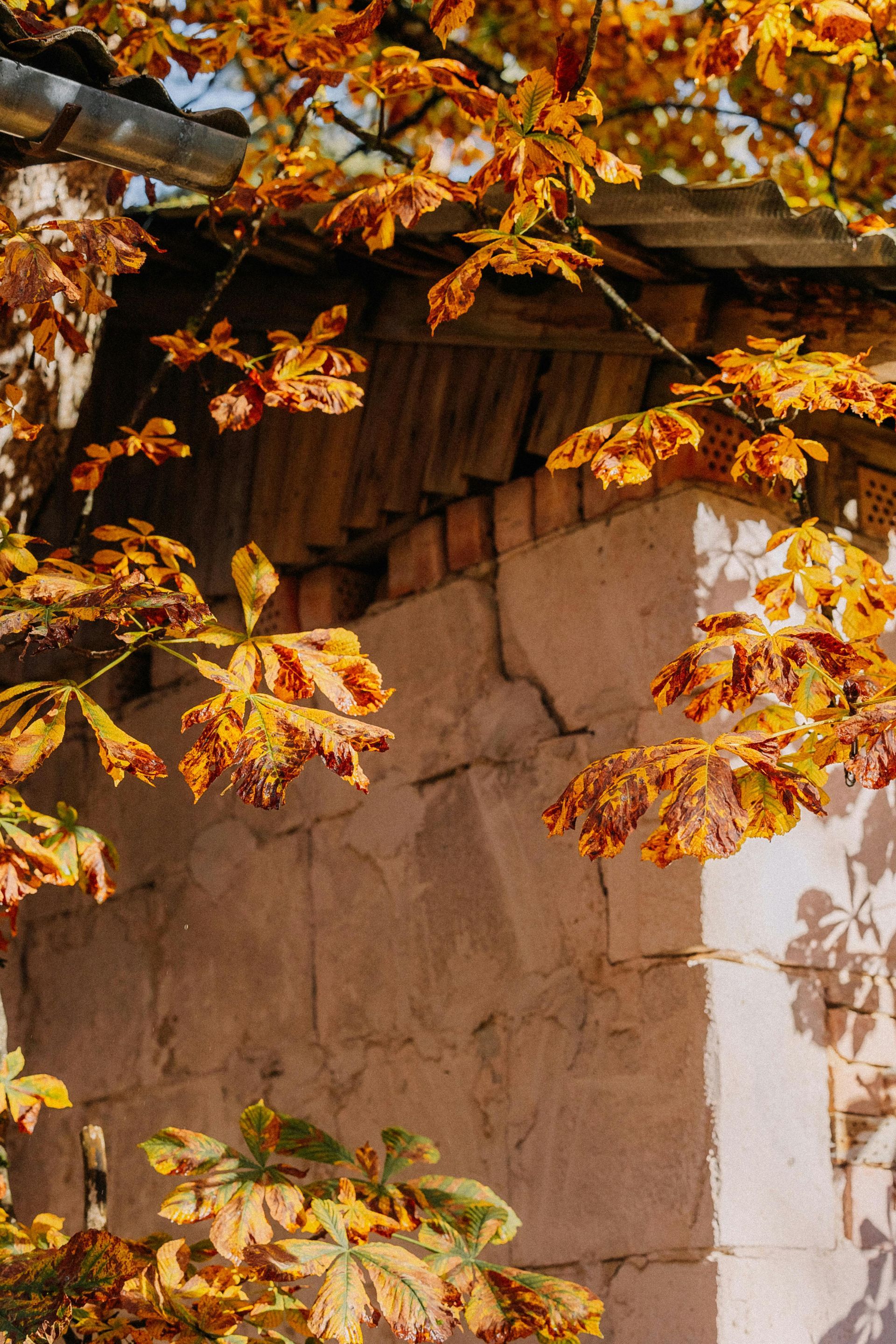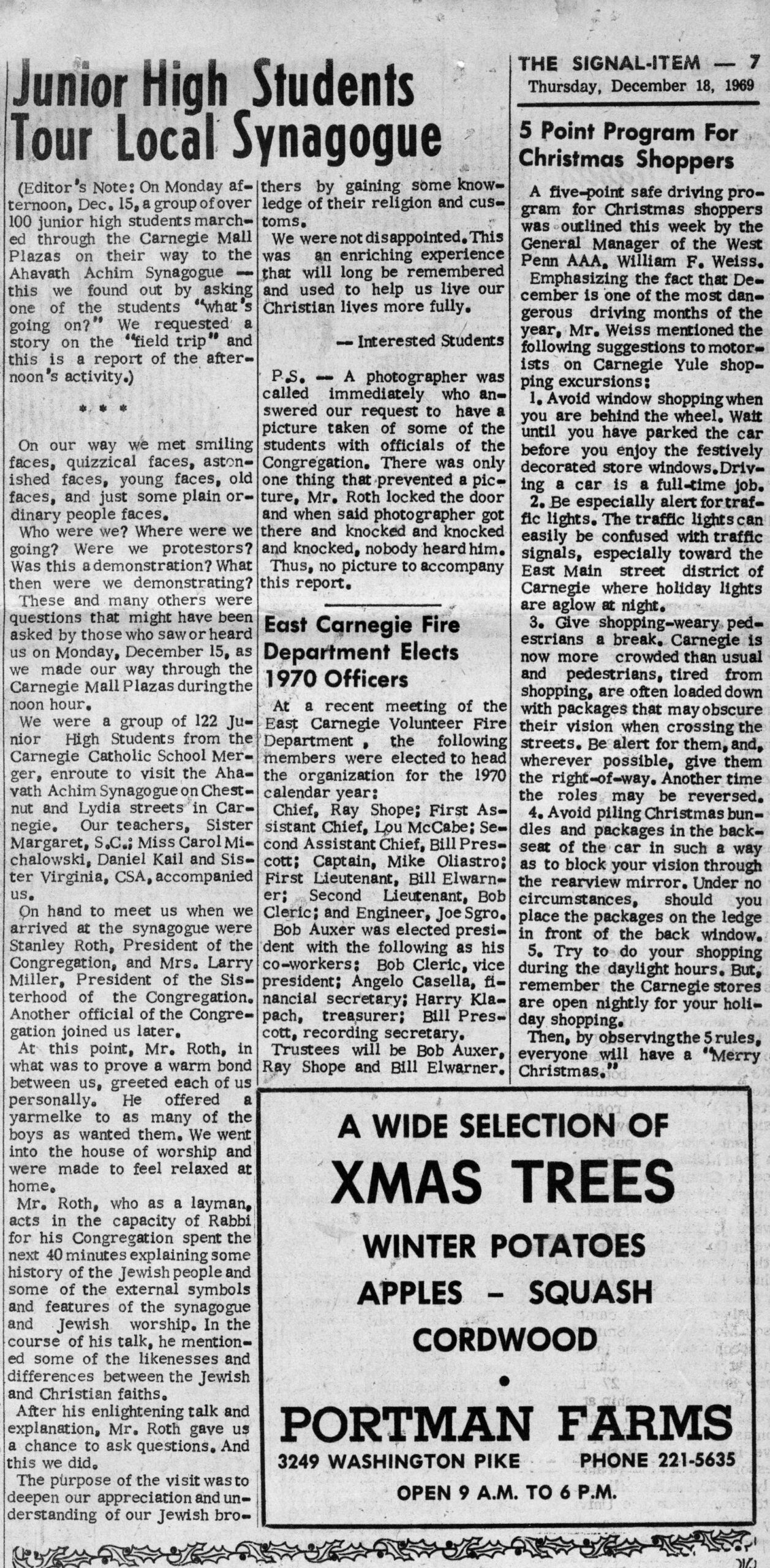Shul Fire- 1934
Shul Fire- 1934

According to the oral history that was passed to me from our Nusi, Stanley Roth, may he rest in peace, our first shul burned in 1934 and our new shul opened in 1937. During the interim years the congregation held services at the Elks Club. But of the fire itself I knew nothing. Recently, at a community event in Carnegie I had opportunity to chat with Carol Dlugos of the Carnegie Historical Society. She told me of the slow but steady renovations to the Husler Bldg on Main St., home to the Historical Society. I mentioned that Carnegie's first High Holiday services were conducted in the ballroom of the Husler Bldg., which she knew. And she told me that Dr. Husler was Jewish, which I did not know. That means that it wasn't just a coincidence that the Husler Building opened in February of 1896 and our first holiday services were conducted there that same September. Also, it's probably not a coincidence that Lincoln Savings Bank would be the ground floor tenant of the Husler Bldg. The president of Lincoln Savings was Saul Lipman, an active member of our shul. But I digress. I asked Carol if she knew anything of our first shul on Broadway St. and the fire that destroyed it in 1934. She promised to look into it.
Today I received an email from Carol with a photocopy of an article from the Bridgeville Signal. Before today, I never heard of this paper. It was a sister newspaper to the Carnegie Signal Item. Both were printed by the Knepper family. The papers shared reporters and many identical articles could be found in each paper. The pages that Carol sent me were from the Thursday, December 20, 1934 edition. The print is not very legible. I have transcribed the article to make it easier to read.
Fire Last Saturday Destroys Carnegie Jewish Synagogue
Firemen Fight Blaze for Three Hours—Holy Scrolls Saved by Members of Congregation—Damage Estimated at $6,500.
Flames last Saturday destroyed the Carnegie Jewish Synagogue of Congregation Ahavath Achim on Broadway near Jane Street. The fire broke out about 12:15 p.m., just 15 minutes after Rabbi Samuel Mallinger had concluded the morning services. An overheated furnace was given as the cause of the fire by fire chief Orian Baux who estimated the damage at $6,500.
The fire was discovered by a little negro lad, who was walking past the building. He hurried in to tell Harry Zemon who owns the building next-door and is a member of the congregation. Mr. Zemon and his brother-in-law Sam Klee of Plum Street, hurried to the fire and made an effort to enter the building through the front door. Smoke and flames made entrance impossible, and they ran to the rear of the building and Sam Klee forced his way into the building by breaking a window. He and Mr. Zemon, with the aid of Sam Bales and Charles Perilman, both members of the congregation, succeeded in saving five holy scrolls. The scrolls were the only contents of the building that were saved.
Fire Chief Baux with the aid of both night and day forces, fought the fire for three hours. The building was of frame construction, and they worked tirelessly to keep the fire from spreading, as there were frame structures on either side of the burning building. Three lines of hose were run into the building in an effort to save the synagogue from complete destruction, but a total loss resulted. Books and other valuables which fed the hungry flames, as well as the lumber of the building, which was erected about 30 years ago. Fire Captain George Ebner was cut on the chin by a piece of falling slate and firemen Milton Shulte was hurt in the foot when he stepped on a nail while entering the building with a line of hose. Both of the injured firemen were treated by Dr. Edward Klee.
-------------
Wow, there are certainly a lot of familiar names in this article. I thought perhaps the name Charles Perilman was misspelled because we have a Charles Perlman on our yahrzeit list. However, I noticed in this very same newspaper that the sports writer for the Signal Item was listed as Abe Perilman. So, either there was a Perilman family who are not in our records or this is simply a variation in name spelling which occurred so frequently.
The article says the shul was about 30 years old. That makes sense considering the charter of the congregation was signed in 1903. Although the first board meeting of the congregation was in 1898, a legal charter would have been necessary for the congregation to buy property and build a shul. In 2015 I wrote an article about the drafting and signing of the shul charter and you can read it HERE. I will try to get some additional information from our local newspapers about the construction of the first shul, which was located at 204 Broadway St.
On a different note, I am planning to do a story on the Beaver Falls shul which has connections with our shul, from it's very beginning until even today. If you have knowledge of the Beaver Falls shul and you would like to be a resource, you can reach me at info@thecarnegieshul.org.
